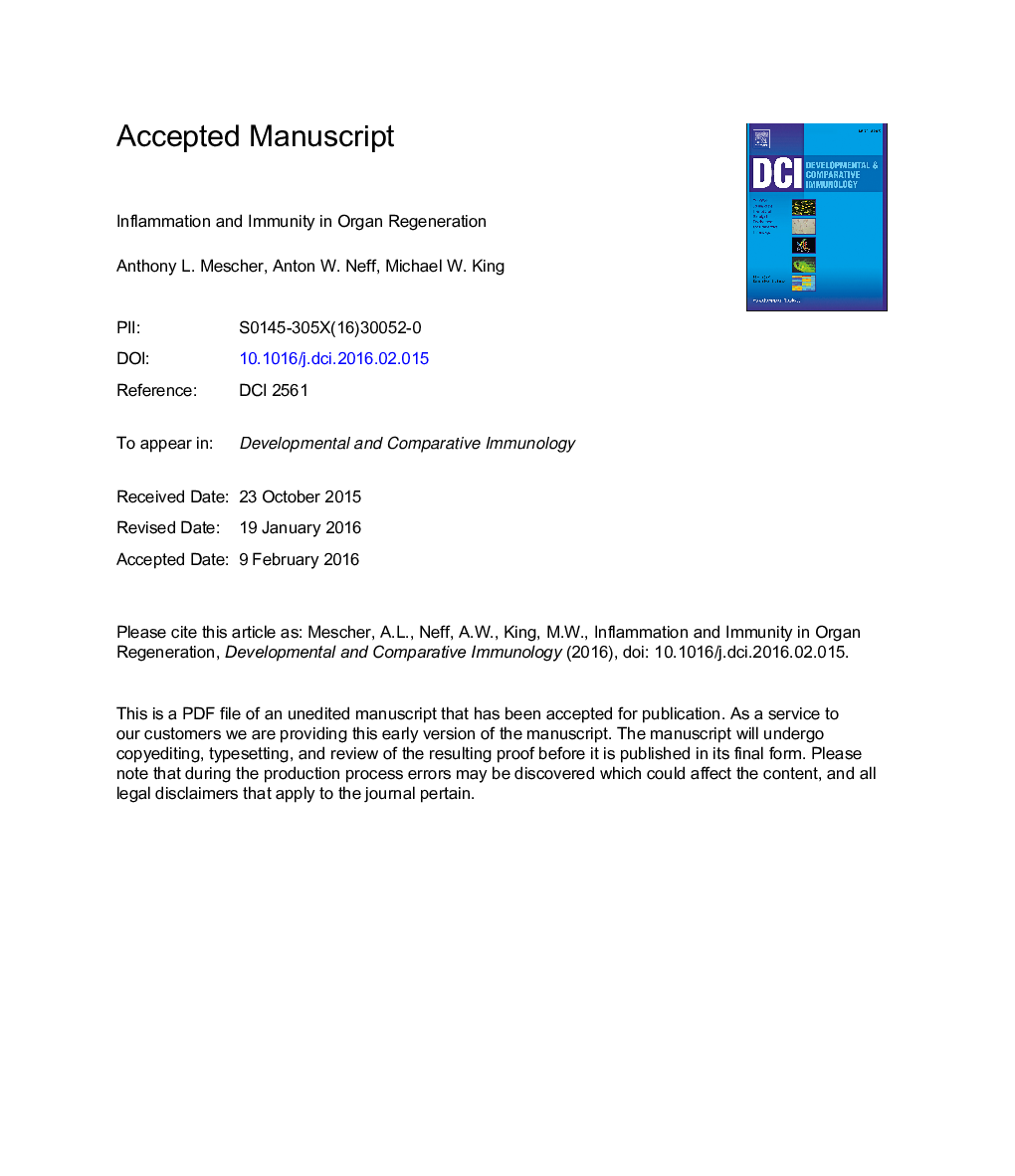| کد مقاله | کد نشریه | سال انتشار | مقاله انگلیسی | نسخه تمام متن |
|---|---|---|---|---|
| 5540005 | 1553566 | 2017 | 63 صفحه PDF | دانلود رایگان |
عنوان انگلیسی مقاله ISI
Inflammation and immunity in organ regeneration
ترجمه فارسی عنوان
التهاب و ایمنی در بازسازی ارگان ها
دانلود مقاله + سفارش ترجمه
دانلود مقاله ISI انگلیسی
رایگان برای ایرانیان
کلمات کلیدی
بازسازی، التهاب دوزیستان، ماهی قزل آلا، ضمیمه رقمی،
موضوعات مرتبط
علوم زیستی و بیوفناوری
بیوشیمی، ژنتیک و زیست شناسی مولکولی
زیست شناسی تکاملی
چکیده انگلیسی
The ability of vertebrates to regenerate amputated appendages is increasingly well-understood at the cellular level. Cells mediating an innate immune response and inflammation in the injured tissues are a prominent feature of the limb prior to formation of a regeneration blastema, with macrophage activity necessary for blastema growth and successful development of the new limb. Studies involving either anti-inflammatory or pro-inflammatory agents suggest that the local inflammation produced by injury and its timely resolution are both important for regeneration, with blastema patterning inhibited in the presence of unresolved inflammation. Various experiments with Xenopus larvae at stages where regenerative competence is declining show improved digit formation after treatment with certain immunosuppressive, anti-inflammatory, or antioxidant agents. Similar work with the larval Xenopus tail has implicated adaptive immunity with regenerative competence and suggests a requirement for regulatory T cells in regeneration, which also occurs in many systems of tissue regeneration. Recent analyses of the human nail organ indicate a capacity for local immune tolerance, suggesting roles for adaptive immunity in the capacity for mammalian appendage regeneration. New information and better understanding regarding the neuroendocrine-immune axis in the response to stressors, including amputation, suggest additional approaches useful for investigating effects of the immune system during repair and regeneration.
ناشر
Database: Elsevier - ScienceDirect (ساینس دایرکت)
Journal: Developmental & Comparative Immunology - Volume 66, January 2017, Pages 98-110
Journal: Developmental & Comparative Immunology - Volume 66, January 2017, Pages 98-110
نویسندگان
Anthony L. Mescher, Anton W. Neff, Michael W. King,
